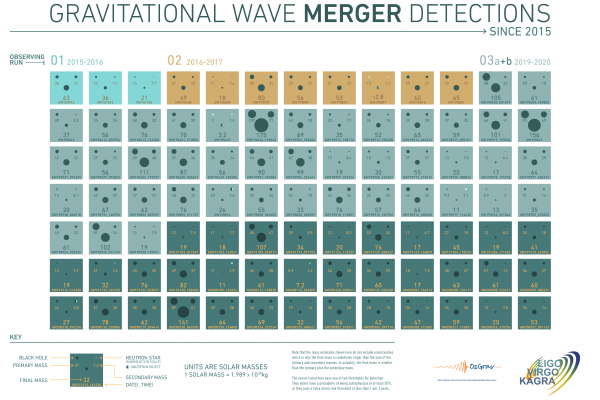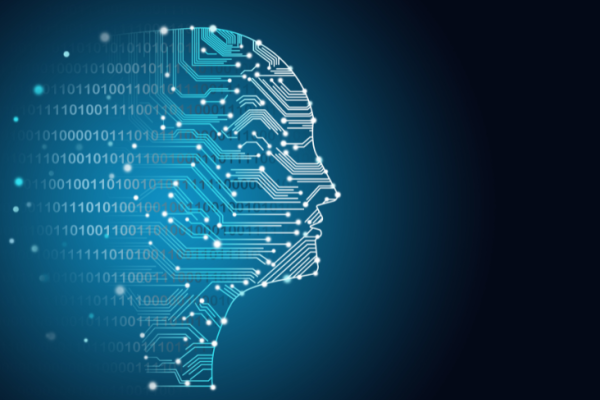35 new events detected by LIGO and Virgo in their latest observation period bring to 90 the gravitational waves detected to date by the global three-interferometer network.
Most of the new signals originate from the whirling spiral of two merging black holes: cosmic quakes that shake the fabric of spacetime, generating a powerful burst of gravitational waves. Two other events, one already reported last June, were instead identified as mergers between a neutron star and a black hole, a source observed for the first time in this last LIGO-Virgo run. A further event, detected in February, 2020, could come from either a pair of black holes or from a mixed pair of a black hole with a neutron star.
The dataset, published today in the so-called third Catalog Paper, outlines the features of new populations of black holes, the masses of which, together with those of the observed neutron stars, may provide clues about how stars live and die, further broadening the horizons of gravitational astronomy.
The Catalog is accompanied by three other publications, focusing on the cosmological and astrophysical consequences of the results and on the multi-messenger search for gravitational-wave signals in coincidence with 86 very energetic bursts (Gammy Ray Bursts) detected in space by the Fermi/GBM and Swift/BAT instruments, during the second part of the third observation period. No confident GW counterparts have been observed; in parallel, no signals of a different kind (e.g. light and neutrinos) have thus far been reported by telescopes and observatories on Earth or in space following-up the GW signals, i.e. searching for signals emitted by the same source as that which emitted the gravitational waves.
At the same time, the LIGO, Virgo and KAGRA scientific collaborations have today also released the full set of calibrated data recorded by the LIGO and Virgo detectors from November, 2019, to March, 2020. This allows the whole research community to perform independent analyses and checks, maximising the wealth of scientific results.
The progress achieved in a few years by gravitational-wave scientists has been amazing, passing from the first detection to the observation of a number of events per month. This has been possible thanks to the programme of continuous technological upgrades, which have transformed the first pioneering instruments into increasingly sensitive detectors. The progress in detector sensitivity due to the technological upgrades and commissioning is evident, considering that, of the 90 gravitational-wave events published today, as many as 79 refer exclusively to the most recent observation period, which ran from April, 2019, to March, 2020.
The LIGO and Virgo observatories are currently undergoing a further upgrade and will start the upcoming fourth observing period, in the second half of 2022, with an even greater sensitivity, corresponding to a volume of the Universe almost 10 times larger than before and, therefore, a much greater probability of picking up gravitational signals.
"Among the other upgrades at Virgo, we have realised an additional optical cavity (the so-called signal-recycling cavity), which allows to improve the sensitivity band of the detector at high frequencies", said Sebastian Steinlechner, assistant professor at Maastricht University and Nikhef. "This corresponds to an increased capacity of the detector to 'listen' to the final stages of the coalescing pairs, when two black holes or stars merge into one."
The KAGRA detector in Japan is being commissioned and KAGRA plans to join the next observing period. The expansion of the network of detectors able to jointly take data will further increase the accuracy of source localisation, a key feature for future developments in multi-messenger astronomy.



